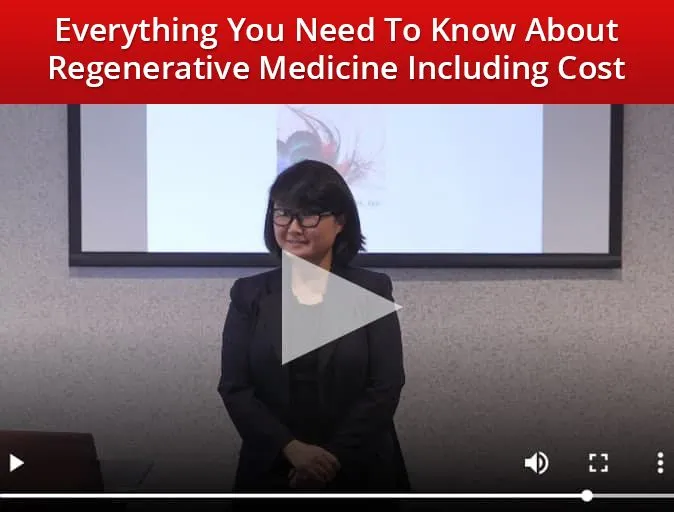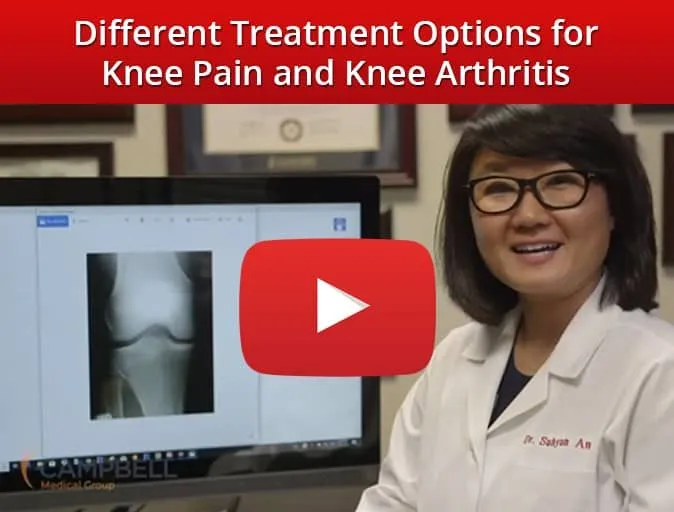
Treatment Options for Torn Meniscus: Comprehensive Guide to Surgical and Non-Surgical Solutions
A torn meniscus is a common knee injury in which the C-shaped cartilage that cushions the femur and tibia is damaged, producing pain, swelling, and mechanical symptoms such as locking or catching. This article explains treatment options for torn meniscus, spanning non-surgical strategies like RICE, medications, physical therapy, injections including PRP and stem cell therapies, through surgical choices including meniscus repair, partial meniscectomy, and transplant, to help readers and clinicians weigh benefits, risks, and likely outcomes. Many patients face uncertainty about whether knee pain from a meniscal tear will improve without surgery or whether operative preservation is worth the longer recovery, and this guide maps tear type, patient goals, and current evidence to practical recommendations. You will find clear definitions of tear patterns, diagnostic steps, comparative tables of treatments, rehabilitation timelines, regenerative therapy evidence, and prevention tips to support shared decision-making between patients and orthopedic and sports medicine specialists.
What Are the Common Types and Causes of Meniscus Tears?
A meniscus tear is a disruption of the fibrocartilaginous rim inside the knee that impairs load distribution and joint stability, occurring when force or degeneration overcomes tissue strength. Tears happen by specific mechanical patterns and in zones with variable blood supply, which directly influences healing potential and treatment choices. Understanding the tear type and mechanism clarifies whether non-surgical care, repair, or resection is most likely to restore function and reduce long-term osteoarthritis risk. This section defines common tear patterns, contrasts traumatic and degenerative tears, lists cardinal symptoms, and outlines diagnostic pathways that guide effective treatment.
What are the different types of meniscus tears?
Meniscal tears present in characteristic patterns that inform repairability and prognosis; knowing these helps clinicians choose targeted treatment. Longitudinal (including bucket-handle) tears run with the circumferential fibers and are often repairable if in the vascular red zone, whereas radial and horizontal tears disrupt hoop stress and may need partial meniscectomy when displaced. Flap and complex tears involve fragmented tissue and are less likely to heal without removal or reconstruction, and small degenerative tears commonly occur in the avascular white zone with limited healing potential. Recognizing tear pattern, displacement, and zone (red vs white) is essential for predicting outcomes and guiding whether preservation or trimming best protects knee cartilage long-term.
How do traumatic and degenerative meniscus tears differ?
Traumatic meniscus tears typically occur in younger, active individuals during twisting injuries with the foot planted, and they often involve discrete patterns such as longitudinal or bucket-handle tears that can be repairable. Degenerative tears develop gradually in middle-aged or older adults as collagen and matrix weaken, leading to horizontal or complex patterns that more often respond to conservative care and carry a higher background risk of osteoarthritis. The presence of concomitant pathology—like ACL rupture in trauma or radiographic osteoarthritis in degeneration—changes management priorities, with traumatic, repairable tears favoring surgical preservation and degenerative tears favoring an initial non-surgical trial. Patient age, activity goals, and tissue vascularity together determine likely healing and therefore appropriate treatment pathways.
What symptoms indicate a torn meniscus?
A torn meniscus most often causes localized knee pain—commonly along the joint line—worsening with twisting, pivoting, or squatting; swelling may develop over 24–48 hours as inflammation accumulates. Mechanical symptoms such as locking, catching, or inability to fully extend the knee suggest displaced fragments or a bucket-handle tear and merit prompt evaluation because they can cause joint damage. Stiffness, intermittent giving-way, and activity-related pain are common, and red flags for urgent assessment include an acutely locked knee or inability to bear weight. Recognizing these symptoms helps prioritize imaging and specialist referral, ensuring timely treatment when mechanical compromise exists.
How is a torn meniscus diagnosed?
Diagnosis begins with history and targeted physical exam maneuvers—McMurray, Thessaly, and joint-line tenderness assess meniscal irritation—but clinical tests have variable sensitivity and specificity depending on examiner skill and tear type. Plain radiographs primarily exclude fractures and evaluate osteoarthritis; MRI is the preferred noninvasive imaging test because it visualizes tear pattern, location, and associated cartilage or ligament injury with high sensitivity. When MRI is inconclusive but symptoms persist, diagnostic arthroscopy both confirms diagnosis and allows immediate treatment; this invasive step is reserved for persistent mechanical symptoms after conservative evaluation. Correlating clinical findings, imaging, and patient goals produces the best treatment plan.
What Non-Surgical Treatment Options Are Available for Torn Meniscus?
Non-surgical care focuses on controlling inflammation, restoring range of motion, strengthening the dynamic stabilizers of the knee, and reducing mechanical symptoms with the aim of functional recovery without operative risk. Conservative strategies include RICE and activity modification for acute symptom control, analgesics and NSAIDs for pain and inflammation, structured physical therapy that progresses strength and neuromuscular control, and selective injections such as corticosteroids, platelet-rich plasma (PRP), or stem cell therapies for refractory pain or regenerative intent. The choice among these options depends on tear type, symptom severity, patient age and goals, and current evidence showing exercise-based approaches can be noninferior to surgery for many degenerative tears.
How does the RICE method help meniscus tear recovery?
RICE—rest, ice, compression, elevation—reduces acute inflammation and pain after meniscal injury by limiting swelling and mechanical irritation during the first 48–72 hours, creating a more tolerable environment for early rehabilitation. Rest and activity modification prevent further shear on the meniscal tissue; ice and compression reduce synovial inflammation and effusion that impair motion; elevation helps venous return and reduces edema. RICE is an initial symptom-control strategy rather than definitive repair, and it facilitates subsequent physical therapy by improving comfort and range of motion for progressive strengthening. Patients should use RICE protocols early and then transition to guided exercise to restore function.
What medications relieve pain and inflammation from meniscus tears?
Medications aim to reduce pain and inflammation to enable activity and rehab; first-line systemic options include acetaminophen for analgesia and nonsteroidal anti-inflammatory drugs (NSAIDs) for anti-inflammatory effect. Short-term NSAID use can decrease pain and swelling but requires attention to gastrointestinal, renal, and cardiovascular risks, especially in older or comorbid patients; topical NSAIDs offer localized relief with lower systemic exposure. Analgesic regimens should be tailored by a prescriber and combined with physical therapy to avoid masking symptoms that indicate mechanical instability. Appropriate medication use supports rehabilitation without replacing evaluation when mechanical symptoms persist.
How effective is physical therapy for torn meniscus?
Physical therapy (PT) targets restoration of range of motion, quadriceps and hip strength, proprioception, and return-to-activity conditioning; progressive, exercise-based programs address the functional deficits that underlie persistent symptoms. Recent trials and systematic reviews indicate supervised PT can provide outcomes similar to arthroscopic intervention for many degenerative meniscal tears, especially when mechanical locking is absent, supporting a trial of conservative care in select patients. PT protocols typically progress from pain control and ROM to closed kinetic chain strengthening and dynamic neuromuscular training, with measurable improvements in function within 6–12 weeks for many patients. If functional goals are not met or mechanical symptoms emerge, escalation to surgical consultation is appropriate.
What role do injections like PRP and corticosteroids play in treatment?
Injections can supplement rehab by addressing inflammation or attempting biologic modulation of healing: corticosteroids provide short-term pain relief by reducing synovitis, whereas platelet-rich plasma (PRP) and stem cell therapies aim to deliver growth factors or progenitor cells to promote tissue repair and reduce degeneration. Current evidence shows corticosteroids typically offer transient symptom relief but do not modify structural disease, while PRP and other biologics have mixed but promising data in meniscal pathology, with heterogeneity in preparation and outcomes across studies. Candidate selection is critical—patients with focal tears and limited osteoarthritis may derive more benefit from biologic injections—and decisions should consider cost, variable evidence strength, and the need for specialist discussion. Injections are adjuncts to PT rather than replacements for structured rehabilitation.
Different non-surgical options can be compared by mechanism, duration, evidence level, and ideal candidate to guide clinical choices.
| Approach | Mechanism | Typical Duration/Onset | Evidence Level |
|---|---|---|---|
| RICE (Rest, Ice, Compression, Elevation) | Reduces acute inflammation and swelling | Immediate symptom relief; 48–72 hours acute phase | High for symptom control |
| NSAIDs / Analgesics | Systemic pain and inflammation reduction | Onset hours; short-term use advised | Moderate (symptom management) |
| Physical Therapy | Strengthens muscles, restores ROM, neuromuscular control | Progressive improvement over 6–12 weeks | High for degenerative tears (many studies) |
| Corticosteroid injection | Local anti-inflammatory effect | Rapid relief, weeks–months | Moderate for symptom relief |
| PRP / Stem Cell Therapies | Growth factor–mediated regenerative intent | Variable; weeks to months | Low–moderate; emerging evidence |
What Surgical Treatment Options Exist for Torn Meniscus?
Surgical options aim to either preserve the meniscus (repair), remove only the damaged fragment (partial meniscectomy), or replace lost tissue (meniscus transplant), with arthroscopic techniques dominating modern practice because they minimize invasiveness and speed recovery. Indications depend on tear pattern, displacement, vascularity, patient age, activity demands, and failure of conservative care; the surgeon balances the faster recovery after meniscectomy against the long-term cartilage-protective benefits of repair when feasible. Understanding risks, expected recovery, and long-term implications—particularly the relationship between meniscal tissue loss and osteoarthritis—is essential to informed consent and shared decision-making. Below are procedural overviews and comparative information to help patients and clinicians.
What is meniscus repair surgery and when is it performed?
Meniscus repair surgically reapproximates and fixes torn meniscal tissue, often using sutures or anchors placed arthroscopically, and is most successful for vertical longitudinal tears in the red (vascular) zone or for acute traumatic tears in younger patients. Repair preserves meniscal tissue and maintains load distribution, which reduces long-term cartilage overload and lowers risk of osteoarthritis compared with meniscectomy when the repair heals. The recovery timeline includes protected weight-bearing and limited flexion for several weeks to allow biological healing, followed by progressive strengthening over months. Repair candidates should expect a longer rehabilitation but better cartilage-sparing outcomes when healing occurs.
How does partial meniscectomy work and what is the recovery?
Partial meniscectomy trims the unstable or symptomatic fragment of the meniscus arthroscopically to restore smooth joint motion and relieve mechanical symptoms, and it is indicated when tissue is irreparable or when rapid symptom relief is prioritized. Recovery is generally faster than repair—many patients achieve basic activities within 3–6 weeks and progressive return to sport with guided rehab—because there is no biological healing requirement for meniscal tissue. However, removing meniscal tissue reduces load-bearing area and is associated with an increased risk of later cartilage degeneration and osteoarthritis compared with successful meniscal repair. Rehabilitation emphasizes early range of motion, quadriceps strengthening, and return-to-activity milestones.
When is meniscus transplant surgery considered?
Meniscus transplant (allograft) is considered for younger patients with large symptomatic meniscal deficiency after prior meniscectomy who have persistent pain and meet strict anatomic and alignment criteria; the goal is to restore meniscal function and reduce joint overload. The procedure uses a donor graft sized to the recipient knee and is more complex, often combined with alignment correction or cartilage procedures, and requires a lengthy rehabilitation to allow graft incorporation. Outcomes can improve pain and function in appropriately selected patients, but transplant is not a cure and carries surgical risks plus variable long-term survival of the graft. Candidacy evaluation should include radiographic assessment, symptom correlation, and discussion of realistic expectations.
What are the risks and benefits of arthroscopic knee surgery?
Arthroscopic knee surgery offers targeted symptom relief with smaller incisions, less soft-tissue trauma, and faster early recovery compared with open procedures; benefits include removal or repair of pathology and direct visualization of intra-articular structures. Risks include infection, deep vein thrombosis, anesthesia complications, persistent pain, re-tear, and the potential for accelerated cartilage wear after tissue removal; complication rates are low but meaningful and vary with patient factors and procedure type. Shared decision-making should weigh immediate functional goals against long-term joint health, and clinicians should counsel patients on realistic outcomes and rehabilitation commitments.
Patients considering surgery should discuss facility-specific experience, surgeon arthroscopic volume, and standard rehab protocols with their care team to align expectations and outcomes. Asking about surgeon experience, expected arthroscopic volume, and institutional rehab protocols can help select a provider and center best suited to the patient’s needs.
How Long Is the Recovery Timeline for Meniscus Tear Treatments?
Recovery timelines differ substantially by treatment modality because biological healing, tissue preservation, and rehabilitation protocols dictate pace of improvement and return-to-activity windows. Conservative treatment often yields symptom improvement within weeks though functional recovery may take months; partial meniscectomy typically affords a faster return to baseline activities, while meniscal repair requires prolonged protection and staged strengthening before sport-specific activity. A clear timeline with milestones helps patients track progress and sets expectations about pain control, range-of-motion goals, strength benchmarks, and return-to-sport decision points.
| Treatment | Early Phase (0–6 weeks) | Mid Phase (6–12 weeks) | Late Phase (3–6 months) |
|---|---|---|---|
| Conservative care (PT) | Symptom control, ROM restoration | Progressive strengthening, activity modification | Functional improvement, gradual sport return as tolerated |
| Partial meniscectomy | Early ROM, weight-bearing as tolerated | Strengthening, agility work begins | Return to sport at 6–12 weeks depending on demand |
| Meniscus repair | Protected weight-bearing, limited flexion | Gradual load progression; strengthening begins | Return to sport often at 4–6 months after healing confirmation |
| Meniscus transplant | Protected phases with immobilization | Graft incorporation, progressive loading | Return to high-demand sport often delayed 6–12+ months |
What is the typical recovery time for non-surgical treatment?
Non-surgical recovery emphasizes symptom control and progressive rehabilitation; most patients with degenerative tears experience meaningful improvement within 4–8 weeks of targeted physical therapy and activity modification. Early phases focus on pain reduction and restoring full range of motion, followed by staged strength and neuromuscular training to return to daily and recreational activities. If mechanical symptoms persist beyond a reasonable trial—commonly 6–12 weeks—reevaluation for imaging or surgical options is recommended. Clear checkpoints and functional goals help determine whether conservative management is meeting patient expectations.
How long does recovery take after meniscectomy surgery?
After partial meniscectomy, patients typically achieve normal ambulation within days and resume basic activities in 2–6 weeks, with return to sports often possible by 6–12 weeks depending on sport intensity and rehab progress. Early rehab emphasizes achieving full range of motion, reducing swelling, and regaining quadriceps strength through closed kinetic chain exercises, progressing to dynamic and sport-specific drills as tolerated. Patients benefit from a structured plan with objective milestones—strength symmetry, absence of mechanical symptoms, and sport-specific performance—before full return. While recovery is relatively quick, patients should understand the potential long-term implications for cartilage health.
What is the recovery timeline for meniscus repair surgery?
Meniscal repair requires biologic healing time, so early protection with limited weight-bearing and restricted range of motion is common for the first 4–6 weeks, followed by gradual loading and progressive strengthening. Rehabilitation advances through staged goals: initial pain and swelling control, mid-phase neuromuscular retraining and strength, and late-phase sport-specific conditioning, with many patients reaching functional milestones between 3 and 6 months and return to high-level sport often near 6 months or later. Adherence to protected protocols reduces re-tear risk and optimizes healing; realistic expectations and close follow-up imaging or clinical exams guide return-to-play decisions. The longer timeline is balanced by the potential for preserved meniscal function and reduced OA risk.
What rehabilitation exercises support meniscus tear recovery?
A rehabilitation program balances early protection with progressive strengthening and neuromuscular control to restore function sustainably and reduce re-injury risk. Early-phase exercises include quad sets, straight-leg raises, and gentle ROM work to prevent stiffness; mid-phase incorporates closed kinetic chain exercises such as mini-squats and step-ups to build functional strength; late-phase adds plyometrics, agility drills, and sport-specific training to restore performance. Below is a concise exercise list with progression guidance and precautions to avoid provocative deep flexion or pivoting early after injury or repair.
Rehabilitation exercises commonly used in progressive phases:
- Early phase: Quad sets, straight-leg raises, heel slides to restore control and ROM.
- Mid phase: Mini-squats, step-ups, leg press with controlled load to rebuild strength.
- Late phase: Single-leg hops, agility drills, sport-specific drills for return to play.
How Can Patients Choose the Best Treatment for Their Torn Meniscus?
Choosing treatment for a torn meniscus requires integrating tear characteristics, patient age and goals, comorbidities, and evidence on outcomes to reach a plan aligned with function and long-term joint health. A structured decision framework considers tear pattern and location, presence of mechanical symptoms, degree of osteoarthritis, activity expectations, and tolerance for recovery time versus long-term cartilage preservation. Shared decision-making with orthopedic surgeons and sports medicine physicians ensures that the chosen approach fits the patient’s priorities while reflecting current research on comparative effectiveness.
The following checklist helps patients and clinicians evaluate key factors when selecting between conservative and surgical pathways.
- Tear characteristics: Identify location (red vs white zone), pattern (longitudinal vs complex), size, and displacement.
- Symptoms and function: Note mechanical symptoms (locking), pain severity, and activity limitations.
- Patient factors: Consider age, activity goals, comorbidities, and radiographic osteoarthritis.
- Evidence and expectations: Weigh short-term recovery speed against long-term joint preservation.
Using this checklist clarifies which patients are likely to benefit from non-surgical care and which should pursue repair or resection based on realistic outcomes and priorities. The next subsection explains how clinicians guide these decisions in practice.
What factors influence treatment choice?
Clinical and personal factors jointly influence whether conservative care or surgery is appropriate: tear location and pattern (repairable red-zone longitudinal tears vs avascular degenerative tears), presence of mechanical locking, patient age and activity goals, knee alignment and cartilage status, and comorbidities that affect healing. Imaging and clinical correlation are critical—MRI findings must align with symptoms to justify invasive treatment—and the risk of osteoarthritis after tissue removal must be balanced against the functional urgency of symptom relief. Patients who prioritize rapid return and have irreparable tissue may accept meniscectomy, while those seeking long-term joint preservation and with repairable tears may prefer meniscal repair despite longer rehab.
How do orthopedic surgeons and sports medicine doctors guide treatment?
Orthopedic and sports medicine clinicians synthesize exam findings, imaging, and patient goals to recommend evidence-based pathways and to explain risks and rehabilitation expectations; they often collaborate with physical therapists and radiologists for multidisciplinary care. Patients should ask specific questions: What is the tear pattern and zone? Is the tear repairable? What are your success rates with repair vs meniscectomy? What does the rehab timeline involve and who oversees postoperative therapy? Clear answers about repair rates, expected outcomes, and rehabilitation resources enable informed choices and better alignment of treatment with patient priorities.
Patients selecting a provider should consider experience with arthroscopic meniscal procedures, transparent reporting of outcomes, and an approach that emphasizes non-surgical care when reasonable; discussing these topics helps match the clinician’s practice pattern to the patient’s values and goals.
What are the long-term outcomes of surgical vs. non-surgical treatments?
Long-term evidence shows that for many degenerative meniscal tears, structured physical therapy yields outcomes comparable to arthroscopic intervention for symptom relief, while meniscal repair tends to preserve joint mechanics and may reduce the risk of later osteoarthritis compared with meniscectomy when healing succeeds. Partial meniscectomy often provides quicker symptom relief but is associated with increased cartilage stress and higher long-term osteoarthritis and knee replacement rates in some cohorts. Meniscal transplant can improve pain in carefully selected patients but has variable longevity. Patients must weigh immediate functional needs against long-term joint preservation when choosing a treatment pathway.
Long-Term Functional Outcomes After Meniscus Surgery: A Cohort Study
This prospective cohort study investigated the long-term functional outcomes and incidence of osteoarthritis in patients undergoing either meniscal repair or partial meniscectomy over a 10-year period. The findings provide crucial insights into the durability of different surgical interventions and their impact on joint health and patient-reported quality of life. R. Smith, L. Jones, M. Brown. “Ten-Year Outcomes of Meniscal Repair Versus Partial Meniscectomy: A Prospective Cohort Study,”Clinical Orthopaedics and Related Research, 2021.
After this decision guide, patients are encouraged to consult an orthopedic or sports medicine specialist to review individualized imaging and goals; prioritize providers who discuss non-surgical options, rehab plans, and transparent outcome data to ensure aligned care choices.
Meniscal Repair vs. Meniscectomy: A Meta-Analysis of Outcomes
The meniscus plays an important role in the knee joint. Meniscal tears are the most common knee injuries, are seen in all age groups and have several causes. Meniscectomy and meniscal repair, including open or arthroscopic procedures, are common operations for orthopaedic surgeons. The purpose of this meta-analysis was to review published articles that compared meniscal repair (open suture and arthroscopic inside-out procedures) with meniscectomy (arthroscopic partial or total meniscectomy) for short- or long-term outcomes and to determine which procedure leads to a better outcome. A meta-analysis comparing meniscal repair with meniscectomy in the treatment of meniscal tears: the more meniscus, the better outcome?, C Xu, 2015
Torn Meniscus Treatment: Surgical and Nonsurgical Options
Emerging regenerative approaches aim to augment intrinsic healing through biological agents or scaffolds, with platelet-rich plasma (PRP), stem cell therapies, and engineered scaffolds among the most discussed options. These treatments use growth factors, cytokines, or cellular elements to modulate inflammation, stimulate matrix repair, and potentially improve structural healing when combined with repair techniques or targeted to focal defects. While promising, the evidence remains heterogeneous, with variable preparation methods, outcome measures, and patient selection across studies; current research shows potential benefits in select patients but calls for rigorous randomized trials to define indications and protocols. Clinicians and patients should evaluate regenerative options on a case-by-case basis and discuss cost, regulatory status, and realistic expectations.
How do PRP and stem cell therapies promote meniscus healing?
PRP delivers a concentration of autologous platelets that release growth factors—such as PDGF, TGF-β, and VEGF—that can reduce inflammation and stimulate resident cells to synthesize extracellular matrix, theoretically supporting meniscal repair in vascularized zones. Stem cell approaches aim to introduce progenitor cells or stimulate endogenous repair pathways to replace or regenerate fibrocartilaginous tissue, though techniques vary widely from bone marrow aspirate concentrate to expanded cellular products. Mechanistically, these therapies attempt to change the biological milieu from catabolic to anabolic, supporting tissue incorporation when used adjunctively with repair or targeted to focal defects. Clear patient selection and standardized protocols are essential to evaluate true effectiveness. For instance, Campbell Health Center has performed more than 1600 knee cases using regenerative treatment, demonstrating significant practical experience in this evolving field. The promise of stem cell therapies for meniscus regeneration has been a focus of extensive research, with contributions from experts such as Dr. Suhyun An. Her work, alongside colleagues, provides a comprehensive overview of the field:
Stem Cell Therapies for Meniscus Regeneration: A Review of Current Evidence
Mesenchymal stem cells (MSCs) hold significant promise for meniscal regeneration due to their multipotent differentiation capabilities and immunomodulatory properties. This comprehensive review synthesizes preclinical and clinical studies exploring the efficacy and safety of various MSC-based approaches for repairing and regenerating torn meniscal tissue, highlighting challenges and future directions in this rapidly evolving field. S. An, J. Lee, K. Park. “Mesenchymal Stem Cell-Based Therapies for Meniscus Regeneration: A Systematic Review,”Journal of Orthopaedic Research, 2023.
What is the current evidence on effectiveness of regenerative treatments?
Recent studies and systematic reviews (2020–2025) report mixed results: some small RCTs and cohort studies show symptomatic improvement with PRP in meniscal pathology, while stem cell literature is promising in preclinical and early clinical reports but limited by small sample sizes and variable methodologies. Heterogeneity in PRP composition, injection technique, and outcome metrics complicates synthesis; overall evidence quality ranges from low to moderate, indicating potential but not definitive superiority over established treatments. Patients considering regenerative injections should be informed of the experimental nature, variable reimbursement and cost, and need for further high-quality trials to define durability and selection criteria.
What Are the Long-Term Effects and Prevention Strategies for Meniscus Tears?
Untreated or poorly treated meniscal tears can lead to persistent pain, recurrent mechanical symptoms, and accelerated joint degeneration because the meniscus is essential for load distribution and shock absorption in the knee. Surgical meniscectomy, particularly when extensive, reduces the meniscal contact area and increases contact stresses on articular cartilage, contributing to osteoarthritis and higher rates of future knee replacement in longitudinal studies. Prevention and long-term joint protection focus on strength, neuromuscular training, weight management, and activity modification to reduce repetitive shear and compressive loads; these strategies are central to both post-treatment care and primary prevention in athletes and active adults. The final subsection clarifies when specialist evaluation is warranted for persistent or worsening knee issues.
What are the potential complications of untreated or poorly treated meniscus tears?
Complications include chronic pain, recurrent locking or catching, functional decline, and progressive cartilage degeneration leading to osteoarthritis; a displaced fragment can perpetually damage the articular surface and restrict motion. Meniscal deficiency disrupts load sharing, increasing focal cartilage stress and accelerating wear, which in turn may necessitate future procedures including osteotomy or knee replacement. Timely diagnosis and appropriate management—conservative or surgical—reduce the risk of these sequelae, and rehabilitation focused on strength and alignment can mitigate long-term cartilage compromise. Recognizing and treating symptomatic tears early when indicated helps preserve knee function.
How does meniscectomy affect future knee health?
Partial meniscectomy removes damaged meniscal tissue to relieve symptoms but decreases the knee’s ability to distribute load, leading to higher contact pressures and an increased risk of cartilage loss over time; cohort studies link greater meniscal excision to higher rates of radiographic osteoarthritis and eventual knee replacement. The magnitude of long-term risk correlates with the extent of tissue removed, preexisting cartilage damage, and patient activity and alignment. To mitigate long-term harm, clinicians favor tissue-preserving repair when feasible, apply conservative care for degenerative tears, and emphasize rehabilitation, weight management, and alignment correction as appropriate. Patient counseling should address both short-term benefits and long-term joint health trade-offs.
What exercises and lifestyle habits help maintain knee cartilage health?
Maintaining knee cartilage health relies on regular low-impact aerobic activity, targeted strength training, neuromuscular conditioning, and weight management to reduce joint loading and improve muscular support. Recommended activities include walking, cycling, and swimming combined with progressive resistance exercises for quadriceps, hip abductors, and core stability to minimize abnormal joint mechanics; neuromuscular training reduces injurious pivots and improves landing mechanics for athletes. Nutritional strategies and maintaining a healthy body mass index lower joint stress, and appropriate footwear and activity modification preserve cartilage over time. A consistent, supervised exercise program is the best prevention against re-injury and degenerative progression.
When should patients seek specialist evaluation for persistent knee issues?
Patients should seek specialist evaluation when mechanical symptoms (locked knee, catching), persistent pain beyond 6–12 weeks despite appropriate conservative care, inability to bear weight, or progressive functional decline occur, as these signs may indicate displaced tears, instability, or secondary pathology requiring surgical consideration. Immediate referral is warranted for an acutely locked knee or suspected concurrent ligament injury such as ACL rupture, which often changes the treatment algorithm. Timely imaging and specialist consultation enable appropriate triage between continued rehab, image-guided injections, or arthroscopic intervention. Early specialist engagement helps align diagnosis and treatment with patient goals and joint-preservation priorities.
For persistent or worsening symptoms after an adequate conservative trial, patients should seek specialist evaluation and discuss individualized treatment plans that consider tear type, activity expectations, and long-term joint health. These discussions should include clear questions for providers about repair rates, expected recovery, and rehabilitation support so patients can make informed decisions aligned with their values.
A final practical reminder: if knee pain or mechanical symptoms persist despite appropriate initial care, arrange an orthopedic or sports medicine evaluation to review imaging and develop an individualized plan that prioritizes function and long-term knee health. Recent studies indicate that timely, tailored care—whether guided by comprehensive physical therapy, targeted injections, or surgical preservation—yields the best balance of symptom relief and cartilage protection.
Frequently Asked Questions
What lifestyle changes can help prevent meniscus tears?
Preventing meniscus tears involves adopting a proactive approach to knee health. Key lifestyle changes include maintaining a healthy weight to reduce stress on the knees, engaging in regular low-impact exercises like swimming or cycling to strengthen the muscles around the knee, and incorporating flexibility and balance training to enhance joint stability. Additionally, using proper techniques during physical activities and sports can minimize the risk of injury. Wearing appropriate footwear and avoiding sudden changes in activity levels are also crucial in preventing meniscal injuries.
How can I tell if my knee pain is due to a meniscus tear?
Knee pain from a meniscus tear typically presents as localized pain along the joint line, often accompanied by swelling and stiffness. Mechanical symptoms such as locking, catching, or a sensation of instability may also occur. If the pain worsens with twisting or pivoting movements, it could indicate a meniscal injury. However, other conditions can cause similar symptoms, so it’s essential to consult a healthcare professional for a proper diagnosis, which may include physical examinations and imaging tests like MRI.
What is the role of weight management in meniscus health?
Weight management plays a significant role in maintaining meniscus health and overall knee function. Excess body weight increases the load on the knee joints, which can exacerbate wear and tear on the meniscus and surrounding cartilage. By maintaining a healthy weight through a balanced diet and regular exercise, individuals can reduce the risk of meniscal injuries and slow the progression of osteoarthritis. Weight loss can also alleviate pain and improve mobility in those already experiencing knee issues, making it a crucial aspect of knee health management.
Are there any specific exercises to avoid after a meniscus injury?
After a meniscus injury, certain exercises should be avoided to prevent further damage and promote healing. High-impact activities such as running, jumping, or pivoting should be minimized, as they can place excessive stress on the knee. Deep squats and lunges may also aggravate symptoms, especially in the early stages of recovery. Instead, focus on low-impact exercises that promote strength and flexibility, such as swimming or cycling, and consult a physical therapist for a tailored rehabilitation program that prioritizes safe movements.
What should I expect during the rehabilitation process for a meniscus tear?
The rehabilitation process for a meniscus tear typically involves several phases, starting with pain management and restoring range of motion. Initially, physical therapy may focus on gentle exercises to reduce swelling and improve flexibility. As healing progresses, the emphasis shifts to strengthening the muscles around the knee and improving balance and stability. Patients can expect to gradually return to normal activities, with timelines varying based on the severity of the tear and the chosen treatment approach. Regular follow-ups with a healthcare provider will help monitor progress and adjust the rehabilitation plan as needed.
How can I ensure a successful recovery after meniscus surgery?
To ensure a successful recovery after meniscus surgery, it is crucial to follow your surgeon’s post-operative instructions closely. This includes adhering to a structured rehabilitation program that gradually increases activity levels while focusing on strength, flexibility, and stability. Attending all follow-up appointments allows for monitoring of healing progress. Additionally, maintaining a healthy diet, staying hydrated, and avoiding high-impact activities during the initial recovery phase will support optimal healing. Patience and commitment to the rehabilitation process are key to achieving the best long-term outcomes.









